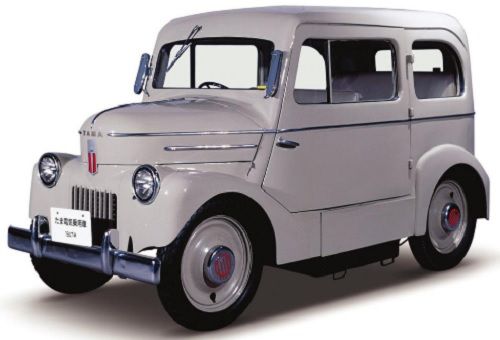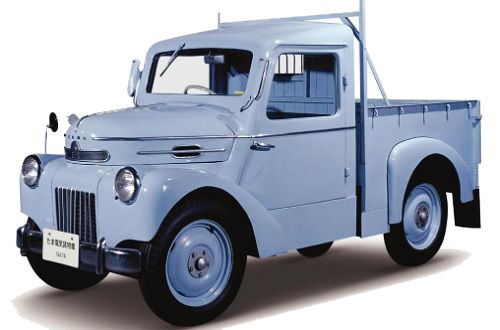After the Second World War, Japan was in ruins. With the exception of Kyoto, all the large cities and towns were severely damaged. To the casual observer Tokyo looked indistinguishable from Hiroshima or Nagasaki – just mile upon mile of bombed and burnt-out buildings. The transport infrastructure and big factories had ceased to exist. Allied troops who arrived to occupy the country couldn’t believe their eyes. Almost 9 million people were homeless.
The devastation caused by two atomic bombs meant gasoline and many of the raw materials needed to build a conventional car were in short supply. To answer the nation’s need, a team of engineers from the Tachikawa Airplane company set to work developing a range of simple electric vehicles under the watchful eye of Allied administrators.
The Japanese were no strangers to electric vehicles. As early as 1917 Rauch and Lang sold ten electric taxicabs to Japan and, even in the misery of a post-war industrial landscape, they were quick to adapt what they knew. Thetwo-door Tama E4S-47-1 went on sale in 1947. It was named after the area where it was built but also, somewhat fortuitously, the name given to a person’s spirit in the Japanese Shinto faith. It soon earned itself a reputation for dependability and became popular with Tokyo taxi drivers who weren’t too bothered by the modest 19 mph (30 km/h) top speed. It used a 36V lead-acid battery and had a maximum range of 40 miles (65 km), although delighted users reported the actual range was closer to 60 miles (96 km).

The company also built a small two-seater pick-up truck, the rather more prosaically named EOT-47-2, which had a 1,100 lb (500 kg) load capacity and was available in both electric and gasoline variants.

The Tama incorporated a number of useful features, such as slide-out battery compartments built into the cabin floor on either side. The battery was placed in a special case that was fitted with rollers. Exchanging an exhausted pack was a simple matter of slotting in a freshly charged one – a far cry from the hydraulic ram system used by the Electric Vehicle Company in New York City 40 years earlier.
The following year, in March 1948, the Japanese Government introduced official performance tests for indigenous automobiles. In the first such tests, carried out by the Ministry of Commerce and Industry, the little Tama took the top honour. In June, Tachikawa Aircraft changed its name to the Tokyo Electric Cars Company. Work continued on the electric car and, in 1949, a radically improved model, called the Senior, was introduced. This had a claimed range of 124 miles (200km) on a full charge. With the advent of gasoline variants, however, the company changed its name again, to Tama Cars, in November 1951 and the following year it became the Prince Motor Co. (in honour of the Emperor of Japan, Crown Prince Hirohita). In April 1954, Prince became part of Fuji Precision Machinery’s growing company portfolio.
| Date of manufacture: | 1947 |
| Overall length: | 118 in (3,035 mm) |
| Width: | 53 in (1,230 mm) |
| Height: | 64 in (1,630 mm) |
| Curb weight: | 2,425 lb (1,100 kg) |
| Seats: | 4 |
| Motor: | 36 V, DC-series wound, rated at 4.5 bhp |
| Top speed: | 19 mph (35 km/h) |
| Approx range: | 40 miles (65 km) |
Prince merged with Nissan in August 1968 and one of the last working examples of the Tama is now in the Nissan heritage collection. In 2011, the Tama was wheeled out into the sunshine for a spin round a Japanese test track as part of the build-up to the international launch of the Nissan Leaf.